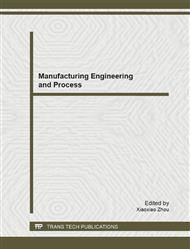p.199
p.203
p.209
p.216
p.221
p.227
p.233
p.239
p.245
Reciprocating Compressor Fault Classify Base on Multi-Component Singular Entropy
Abstract:
Condition monitoring of reciprocating machines through the analysis of their vibrations has been recognized to be a difficult issue, essentially because of the strong nonlinearity of the vibration signals. A new method of multi-component singular entropy is put forward to resolve this problem. Local Wave method is combined with Singular Entropy to extract features from the IMF of the vibration signals of reciprocating machines. And the features will be used as the input of ANFIS to classify and recognize the fault mode. The results are classified correctly. The conclusion shows that this method is feasible.
Info:
Periodical:
Pages:
221-226
Citation:
Online since:
April 2012
Authors:
Keywords:
Price:
Сopyright:
© 2012 Trans Tech Publications Ltd. All Rights Reserved
Share:
Citation:


